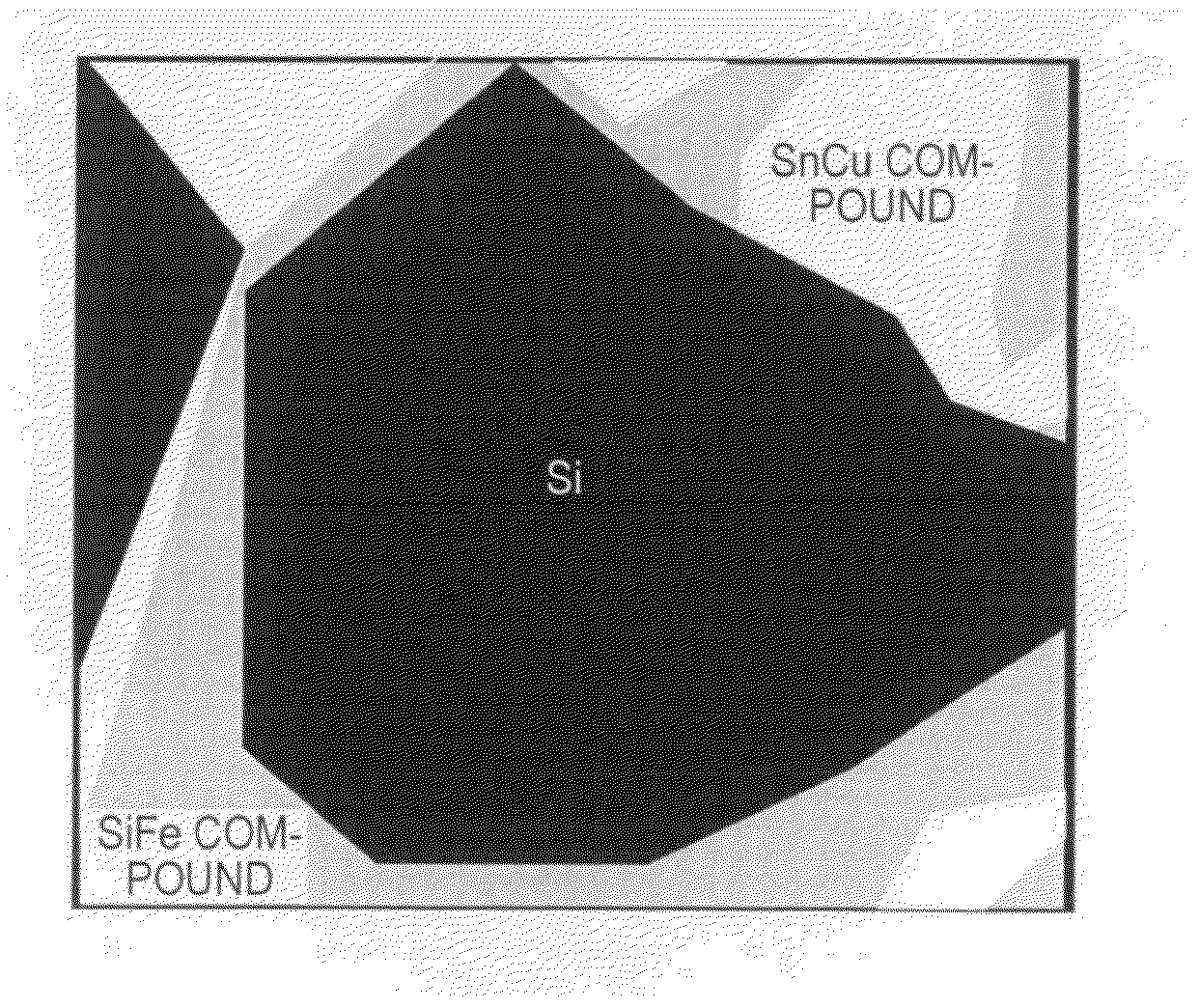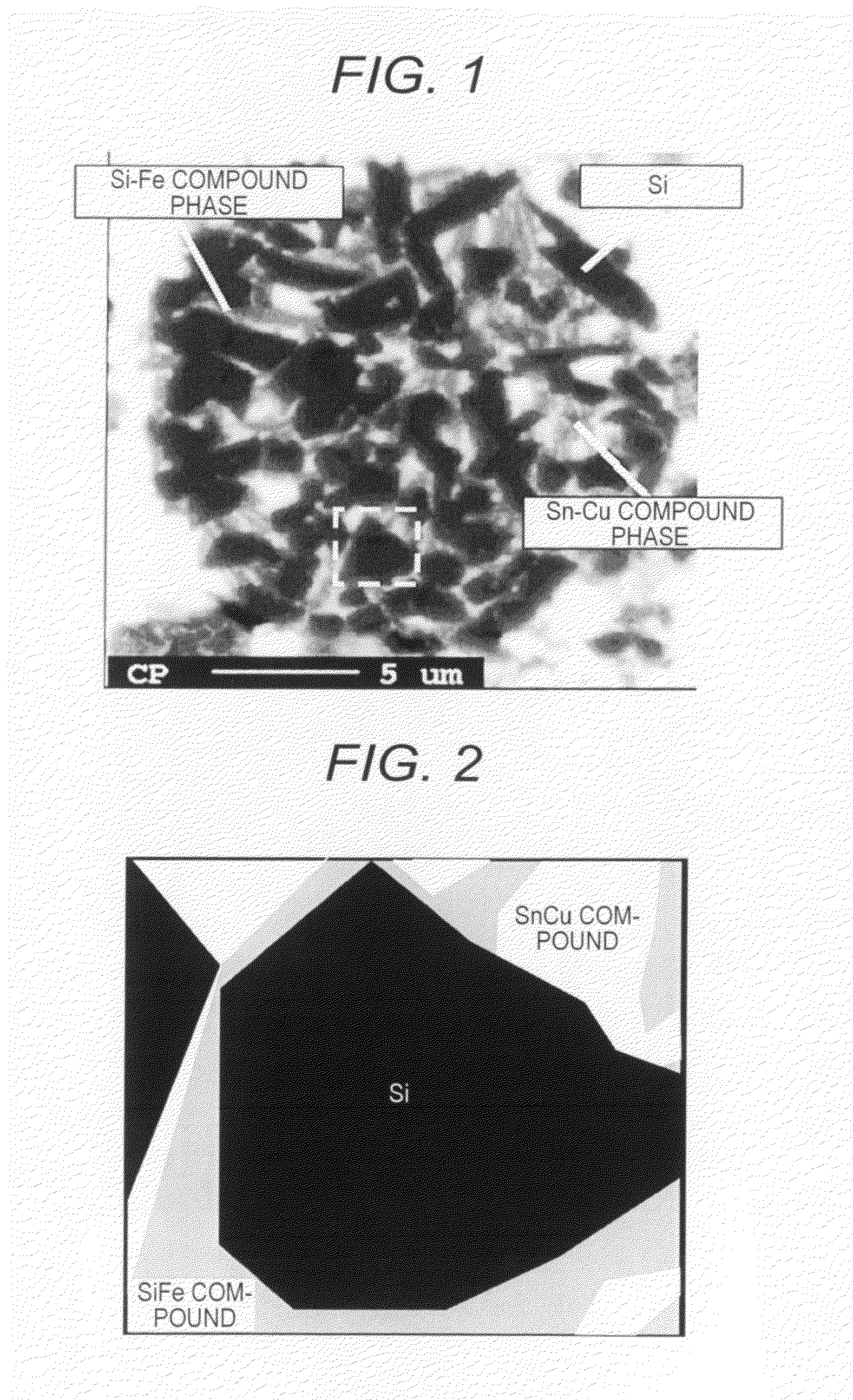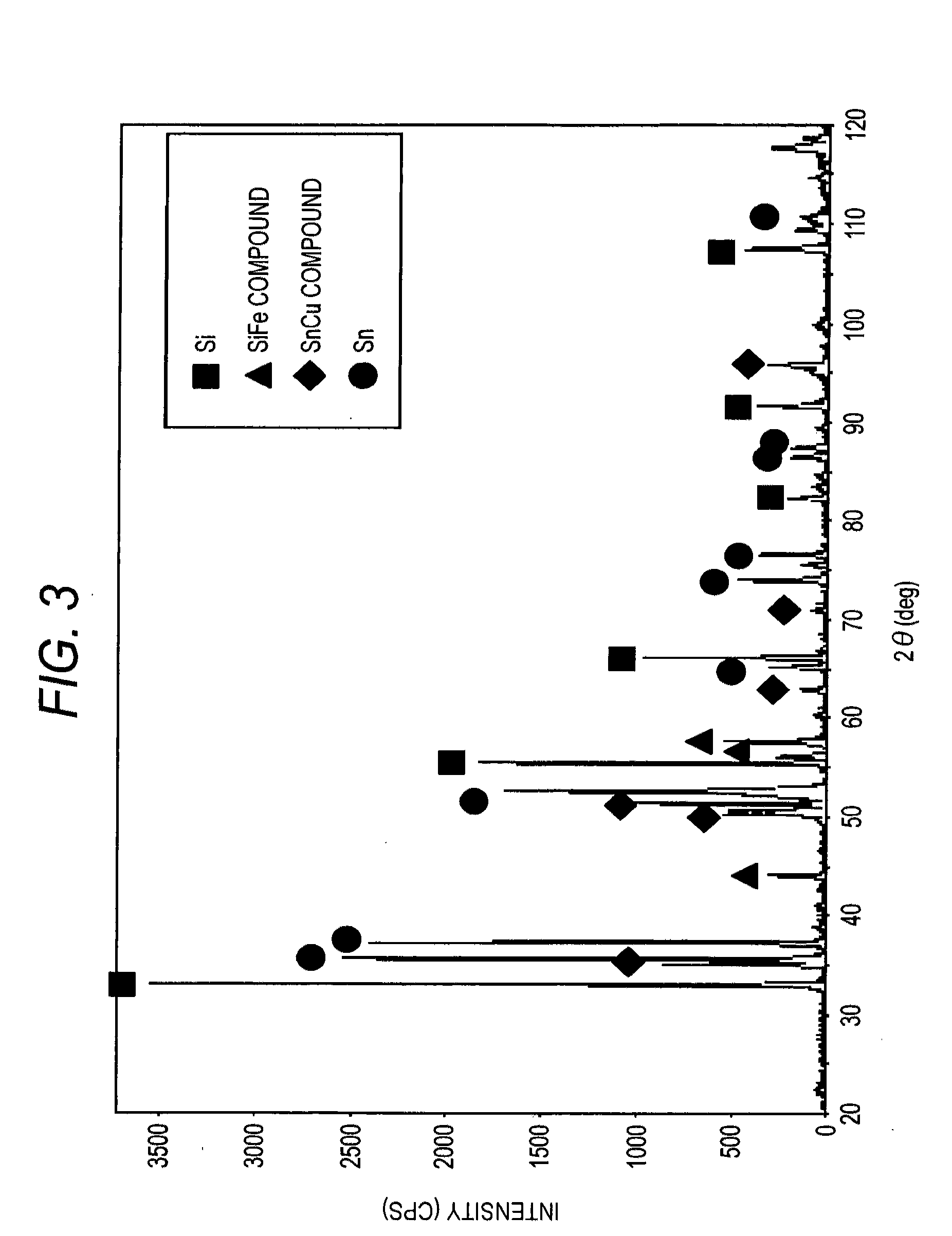Negative electrode active material for lithium secondary battery and negative electrode for lithium secondary battery
- Summary
- Abstract
- Description
- Claims
- Application Information
AI Technical Summary
Benefits of technology
Problems solved by technology
Method used
Image
Examples
example 1
[0086]Each raw material was weighed so as to obtain an alloy composition (44.0% Si-48.2% Sn-3.0% Fe-4.8% Cu) as shown in Table 1. Each raw material weighed was heated and melted using a high-frequency induction furnace to obtain a molten alloy. A powdery negative electrode active material according to Example 1 was prepared from the molten alloy obtained above by a gas atomization method. The atmosphere during the preparation of the molten alloy and during the atomization was argon atmosphere. During the gas atomization, an argon gas of high pressure (4 MPa) was jetted to the molten alloy fallen down in a rod state in an atomizing chamber.
[0087]The powder obtained was classified into a powder of 25 μm or less using a sieve, and the power thus obtained was used as an active material.
examples 2 to 28 and 31 to 35
[0088]Negative electrode active materials according to Examples 2 to 28 and 31 to 35 were obtained in the same manner as in Example 1 except that each raw material was weighed so as to obtain each alloy composition shown in Tables 1 and 2 (however, in Example 26, classified into a powder of 18 μm or less; in Example 27, classified into a powder of 45 μm or less; and in Example 28, classified into a powder of 75 μm or less).
example 29
[0089]A negative electrode active material according to Example 29 was obtained in the same manner as in Example 1 except that each raw material was weighed so as to obtain each alloy composition shown in Table 2 and a water atomization method was used in place of the gas atomization method. The atmosphere during the water atomization was the air. During the water atomization, water of high pressure (50 MPa) was jetted to the molten alloy fallen down in a rod shape in the atomizing chamber.
PUM
 Login to View More
Login to View More Abstract
Description
Claims
Application Information
 Login to View More
Login to View More - R&D
- Intellectual Property
- Life Sciences
- Materials
- Tech Scout
- Unparalleled Data Quality
- Higher Quality Content
- 60% Fewer Hallucinations
Browse by: Latest US Patents, China's latest patents, Technical Efficacy Thesaurus, Application Domain, Technology Topic, Popular Technical Reports.
© 2025 PatSnap. All rights reserved.Legal|Privacy policy|Modern Slavery Act Transparency Statement|Sitemap|About US| Contact US: help@patsnap.com



